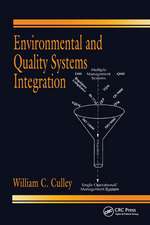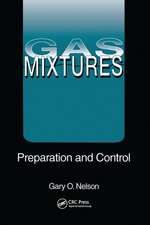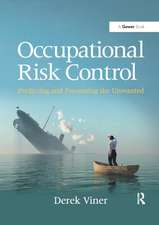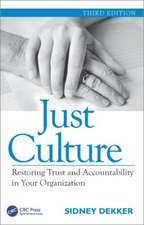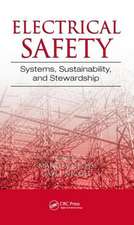Building Vulnerability Assessments: Industrial Hygiene and Engineering Concepts
Autor Martha J. Boss, Dennis W. Dayen Limba Engleză Paperback – 15 oct 2019
All too often the assessment of structural vulnerability is thought of only in terms of security upgrades, guards, and entrance barriers. However, in order to fully ensure that a building is secure, the process of design and construction must also be considered. Building Vulnerability Assessments: Industrial Hygiene and Engineering Concepts focuses on the range of vulnerabilities that can and should be addressed from design implementation through securing a building from intrusion from all types of threats.
Customized Recommendations for Individual Structures
The book begins with an outline for vulnerability assessments conducted either in-house or in coordination with a third party. The text is presented in a way that facilitates modifications for an organization's particular needs. The authors present summaries of regulations that are used to determine if chemicals create a risk to off-site locations or constitute a homeland security vulnerability. They also discuss physical security and chemical, biological, and radioactive (CBR) threat potentials.
Highlights the Threat of Biological Contamination
The remainder of the book discusses control systems to reduce vulnerabilities, emphasizing ventilation system controls. Since a building or facility which is already contaminated is easier to contaminate further, the authors put a heavy focus on new, latent, and residual chemical and biological contamination within building infrastructures. The book concludes by presenting basic emergency planning recommendations and offering recommendations for assessment programs and emergency drills.
This volume, comprising the wisdom of scientists and engineers who have dealt in the past with building and site failures, assists future designers and operations and emergency planners in making decisions that may lessen the impact of emergencies and he
| Toate formatele și edițiile | Preț | Express |
|---|---|---|
| Paperback (1) | 377.86 lei 6-8 săpt. | |
| CRC Press – 15 oct 2019 | 377.86 lei 6-8 săpt. | |
| Hardback (1) | 853.03 lei 6-8 săpt. | |
| CRC Press – 26 iun 2009 | 853.03 lei 6-8 săpt. |
Preț: 377.86 lei
Preț vechi: 504.14 lei
-25% Nou
72.30€ • 75.69$ • 59.83£
Carte tipărită la comandă
Livrare economică 05-19 aprilie
Specificații
ISBN-10: 0367385473
Pagini: 436
Dimensiuni: 156 x 234 mm
Greutate: 0.86 kg
Ediția:1
Editura: CRC Press
Colecția CRC Press
Public țintă
Academic and Professional Practice & DevelopmentCuprins
Descriere
All too often the assessment of structural vulnerability is thought of only in terms of security upgrades, guards, and entrance barriers. However, in order to fully ensure that a building is secure, the process of design and construction must also be considered. Building Vulnerability Assessments: Industrial Hygiene and Engineering Concepts focuses on the range of vulnerabilities that can and should be addressed from design implementation through securing a building from intrusion from all types of threats.
Customized Recommendations for Individual Structures
The book begins with an outline for vulnerability assessments conducted either in-house or in coordination with a third party. The text is presented in a way that facilitates modifications for an organization's particular needs. The authors present summaries of regulations that are used to determine if chemicals create a risk to off-site locations or constitute a homeland security vulnerability. They also discuss physical security and chemical, biological, and radioactive (CBR) threat potentials.
Highlights the Threat of Biological Contamination
The remainder of the book discusses control systems to reduce vulnerabilities, emphasizing ventilation system controls. Since a building or facility which is already contaminated is easier to contaminate further, the authors put a heavy focus on new, latent, and residual chemical and biological contamination within building infrastructures. The book concludes by presenting basic emergency planning recommendations and offering recommendations for assessment programs and emergency drills.






